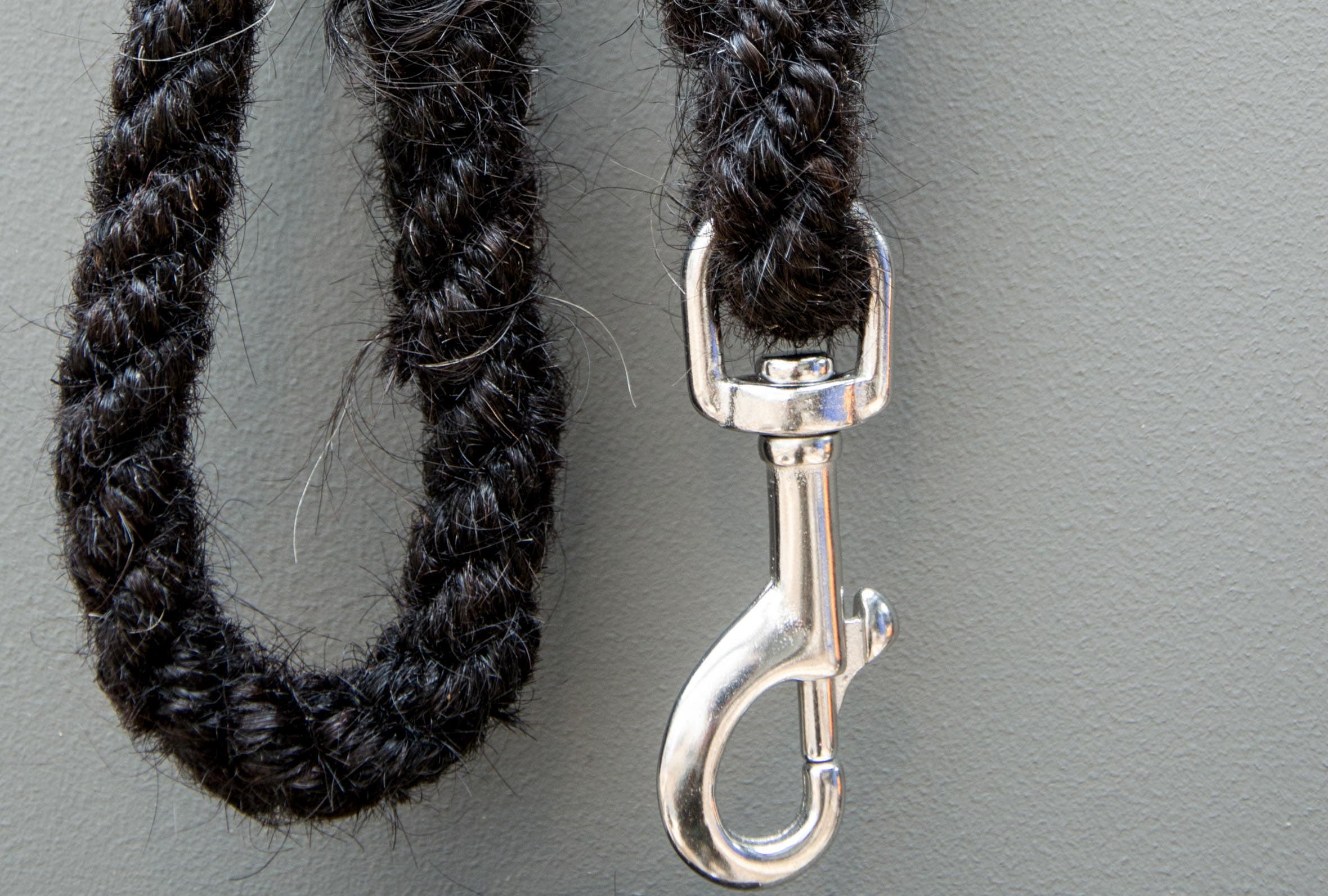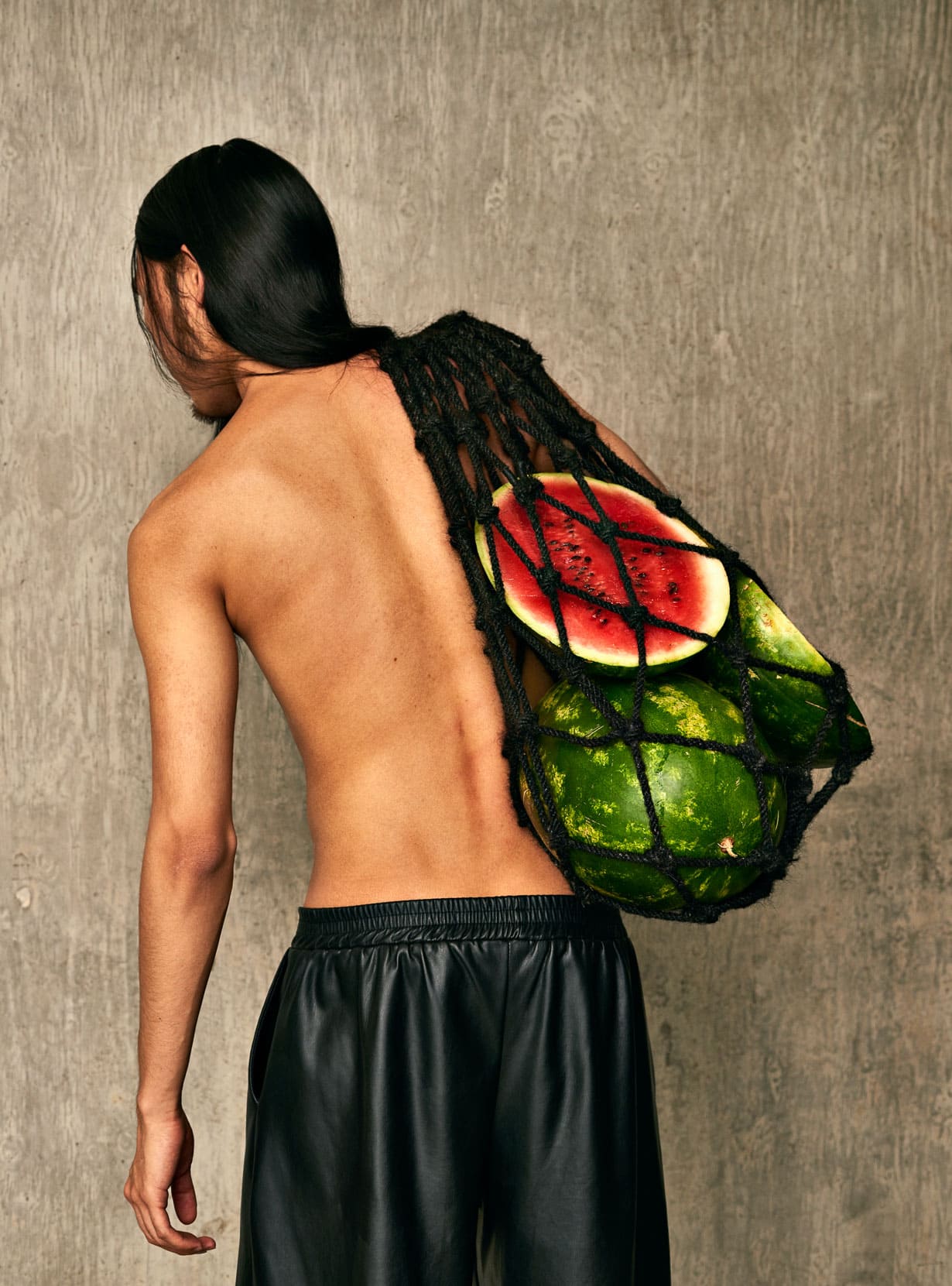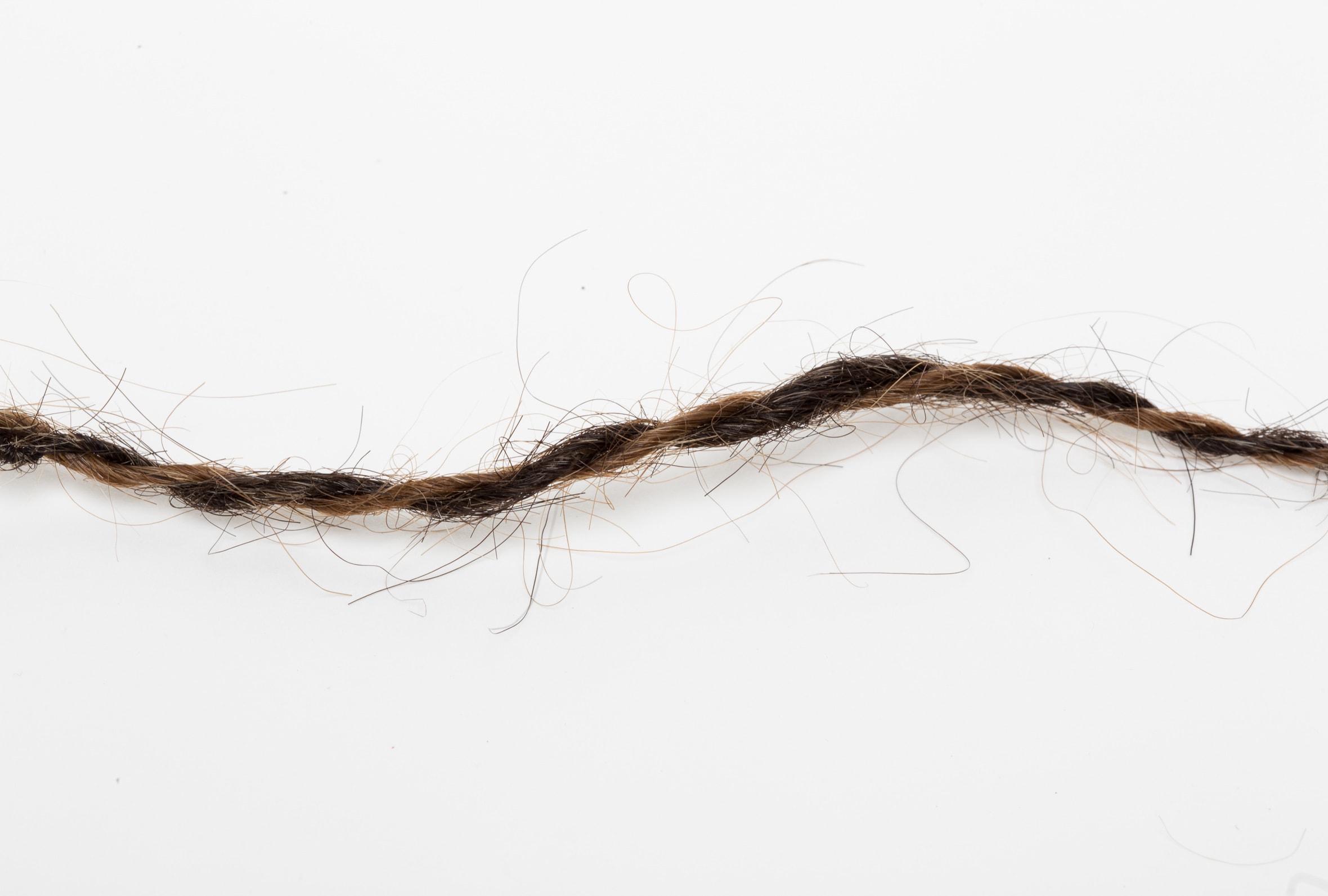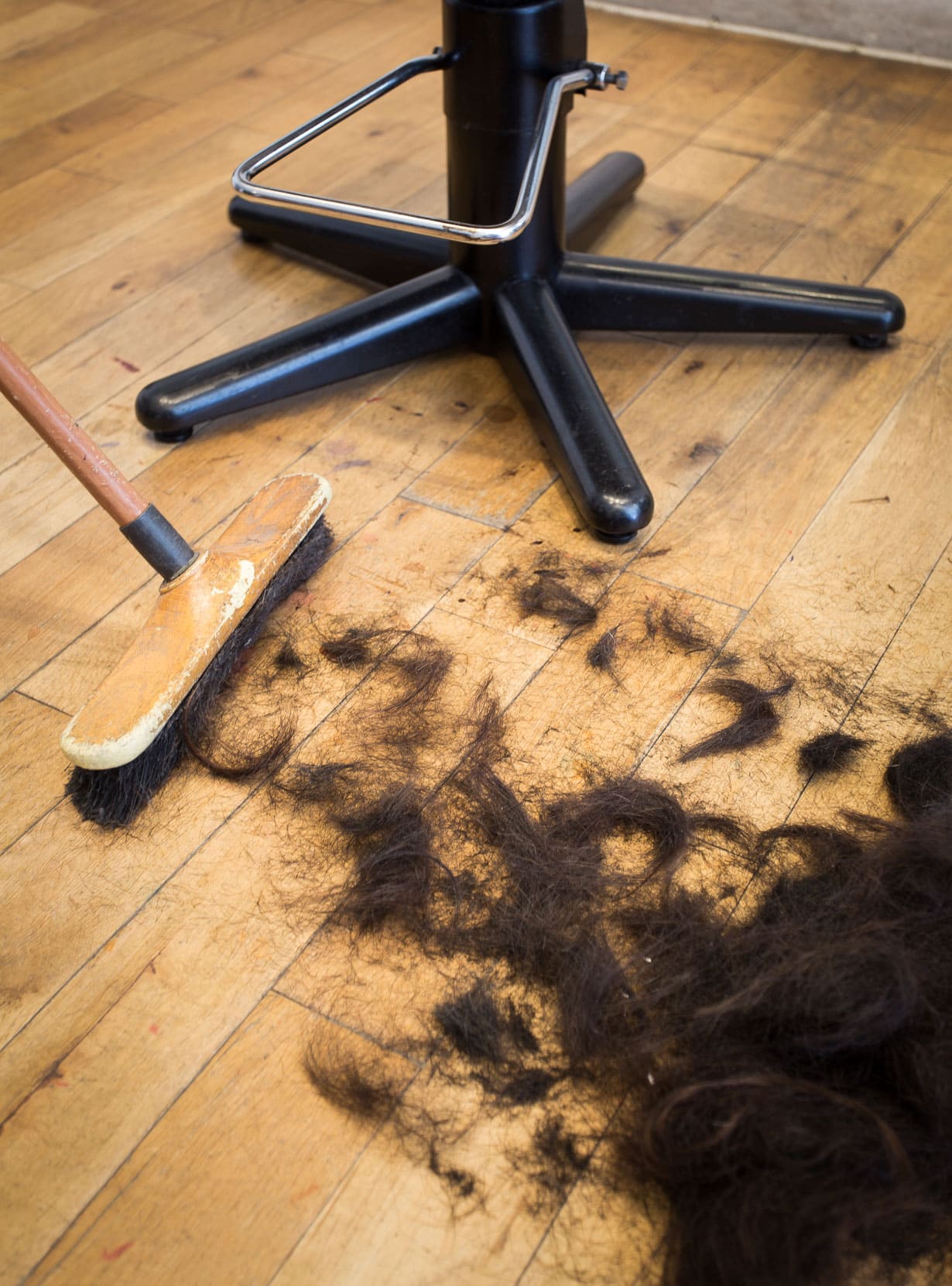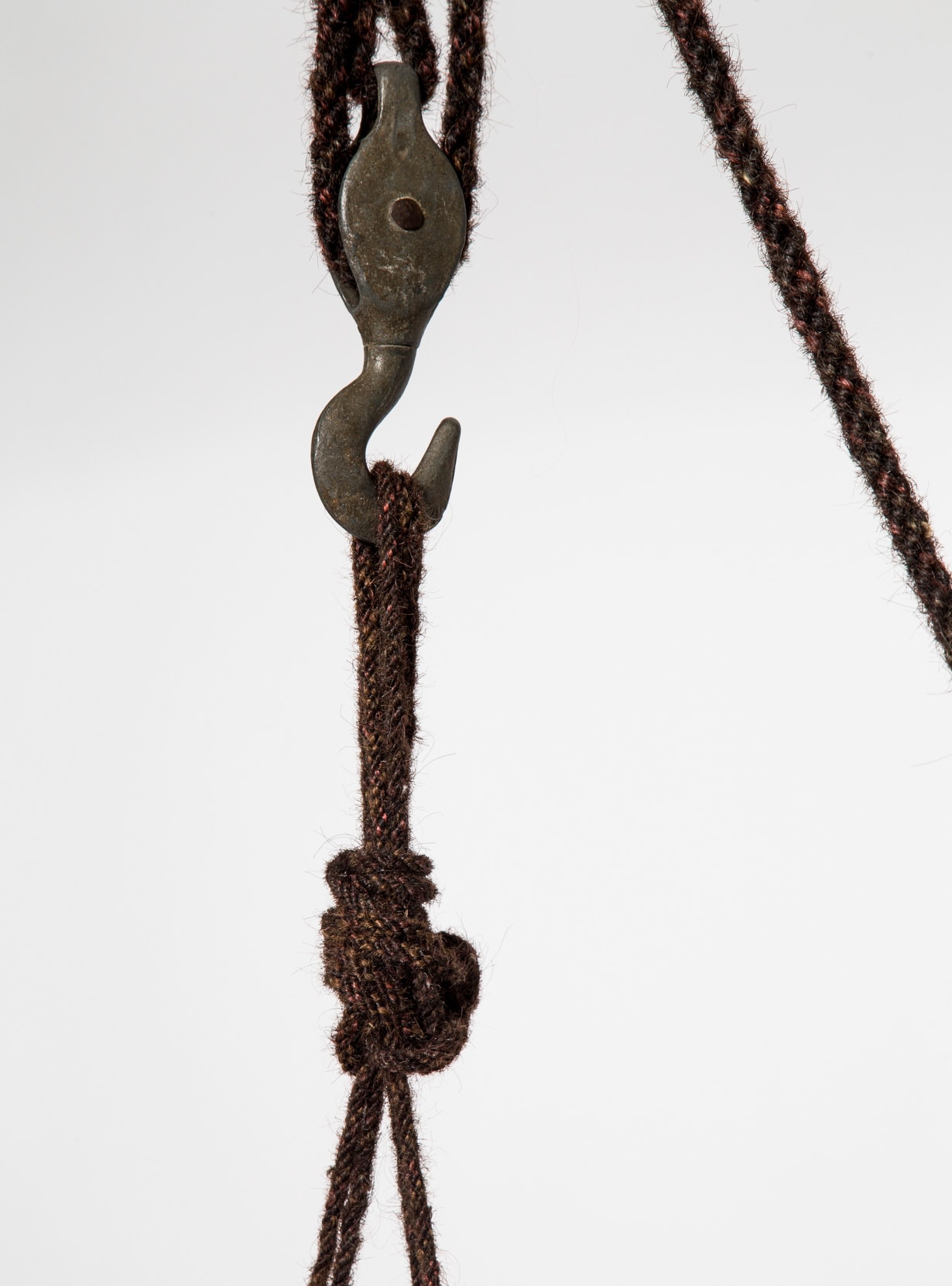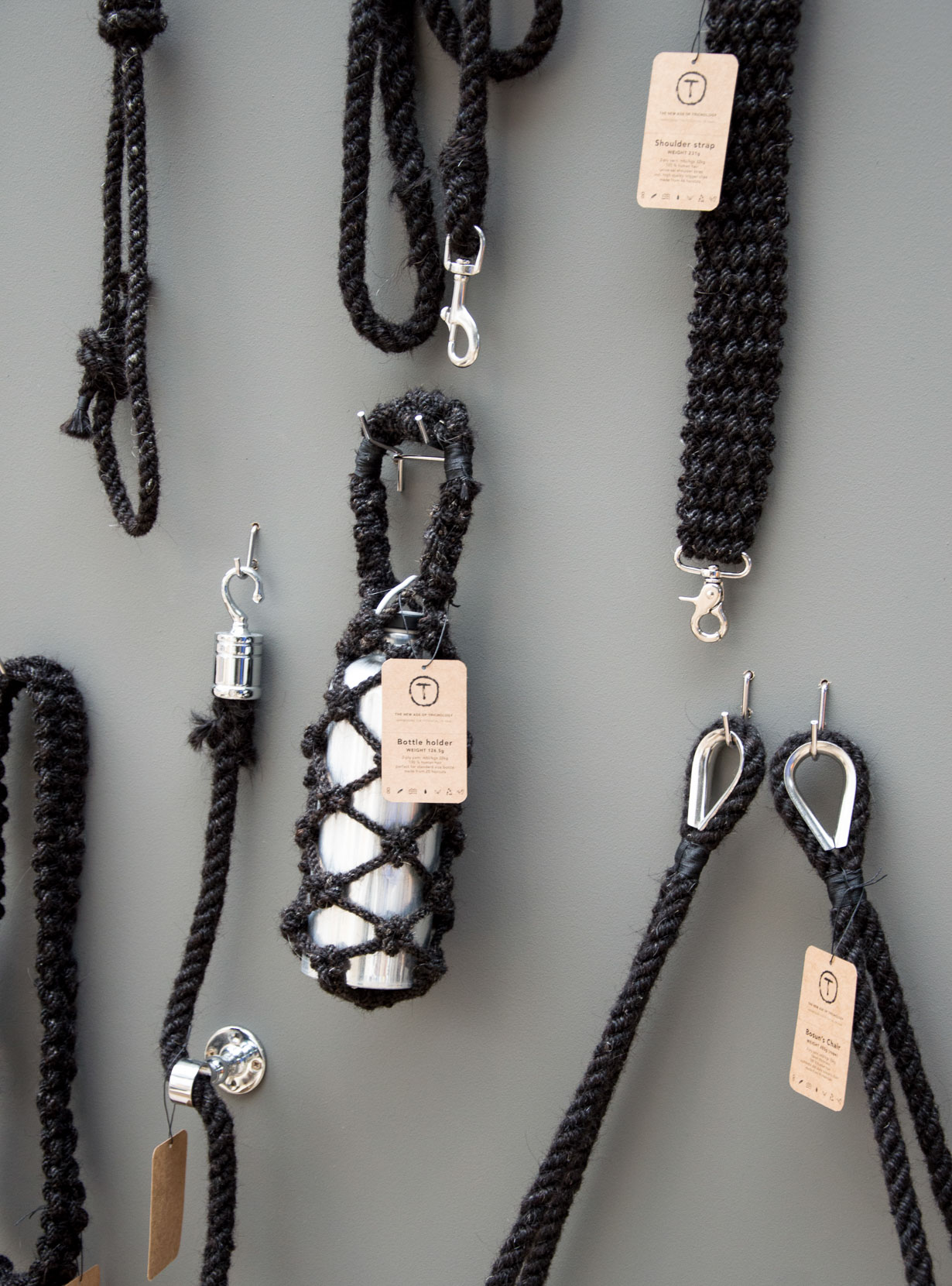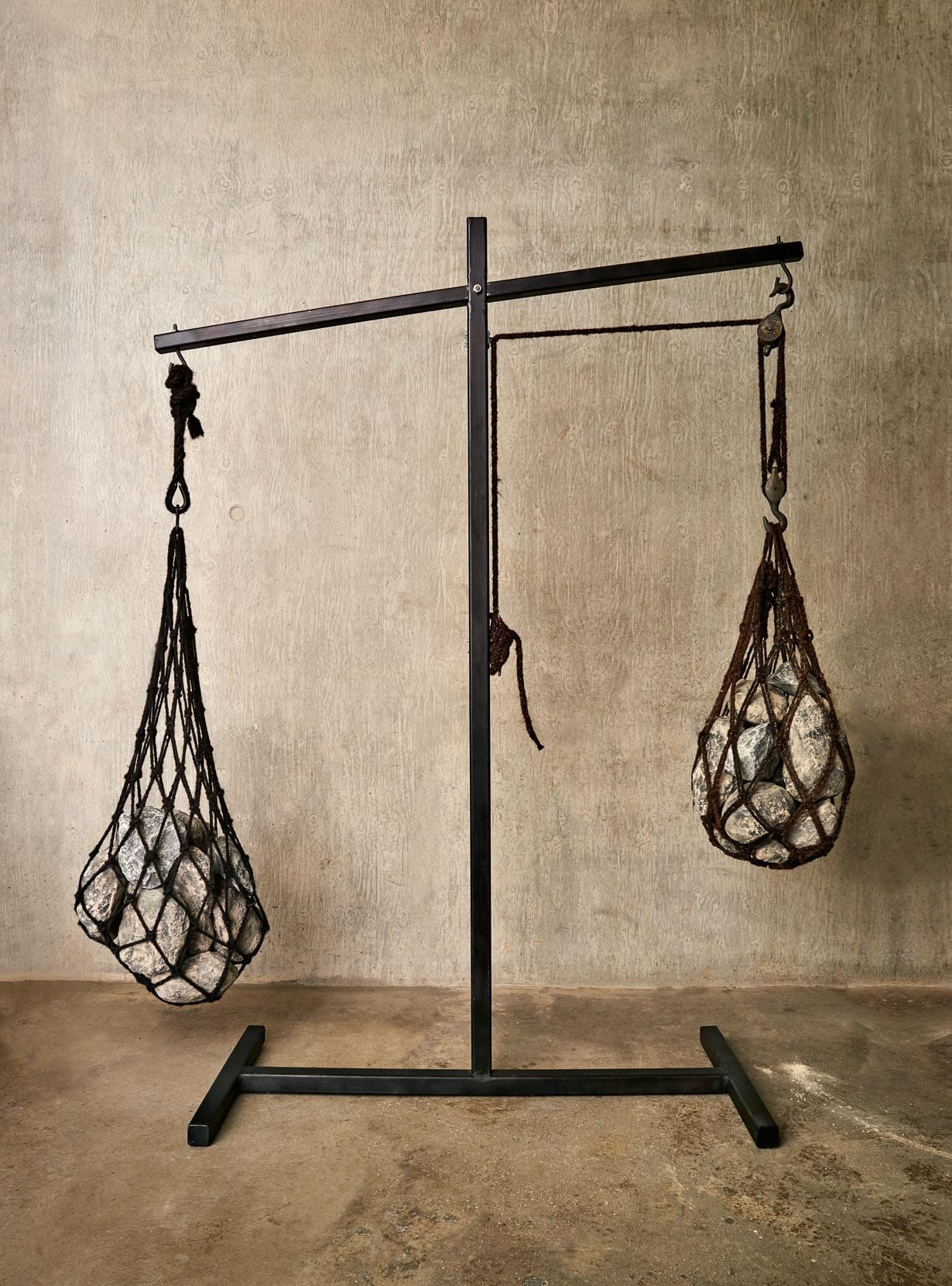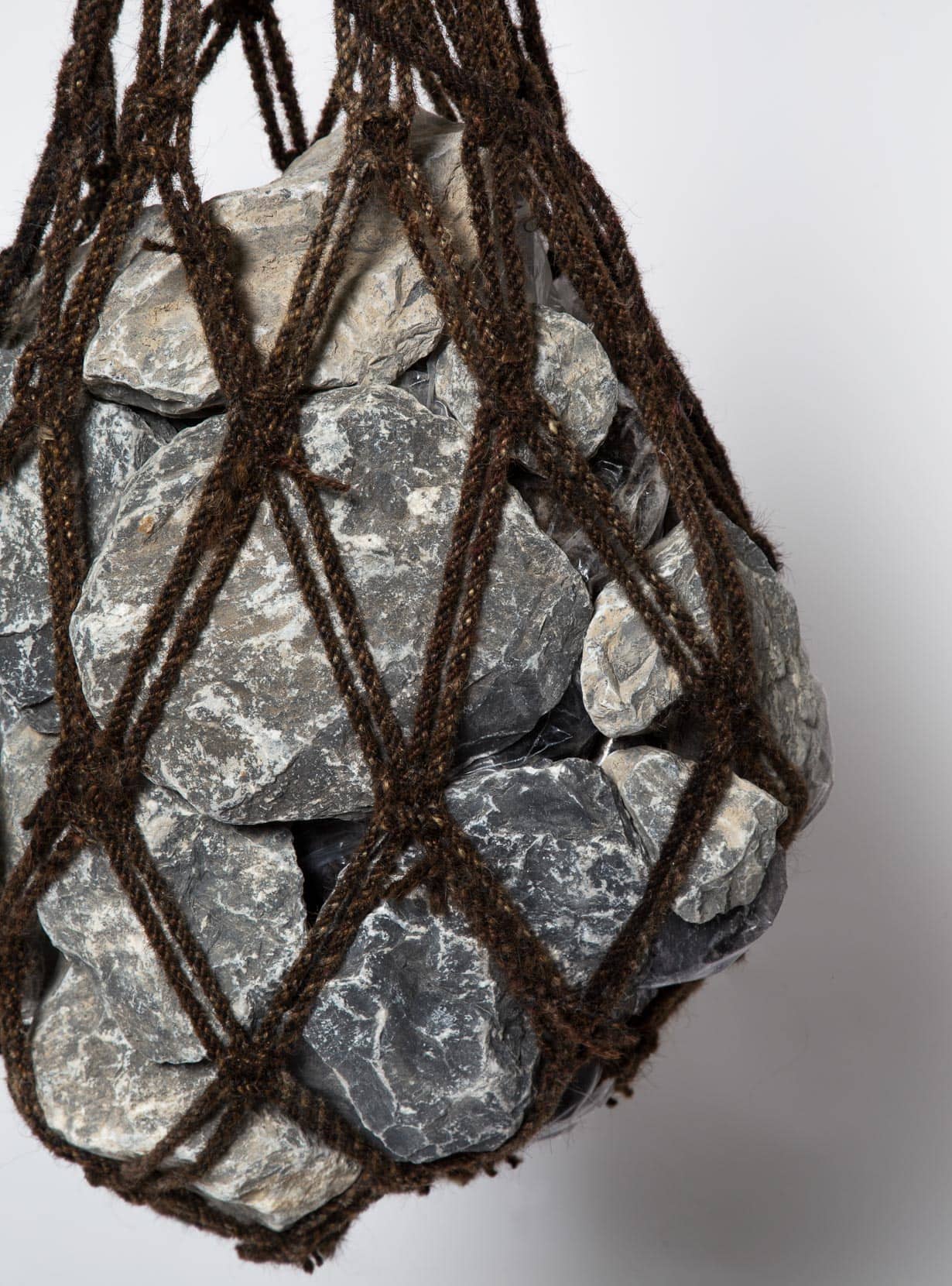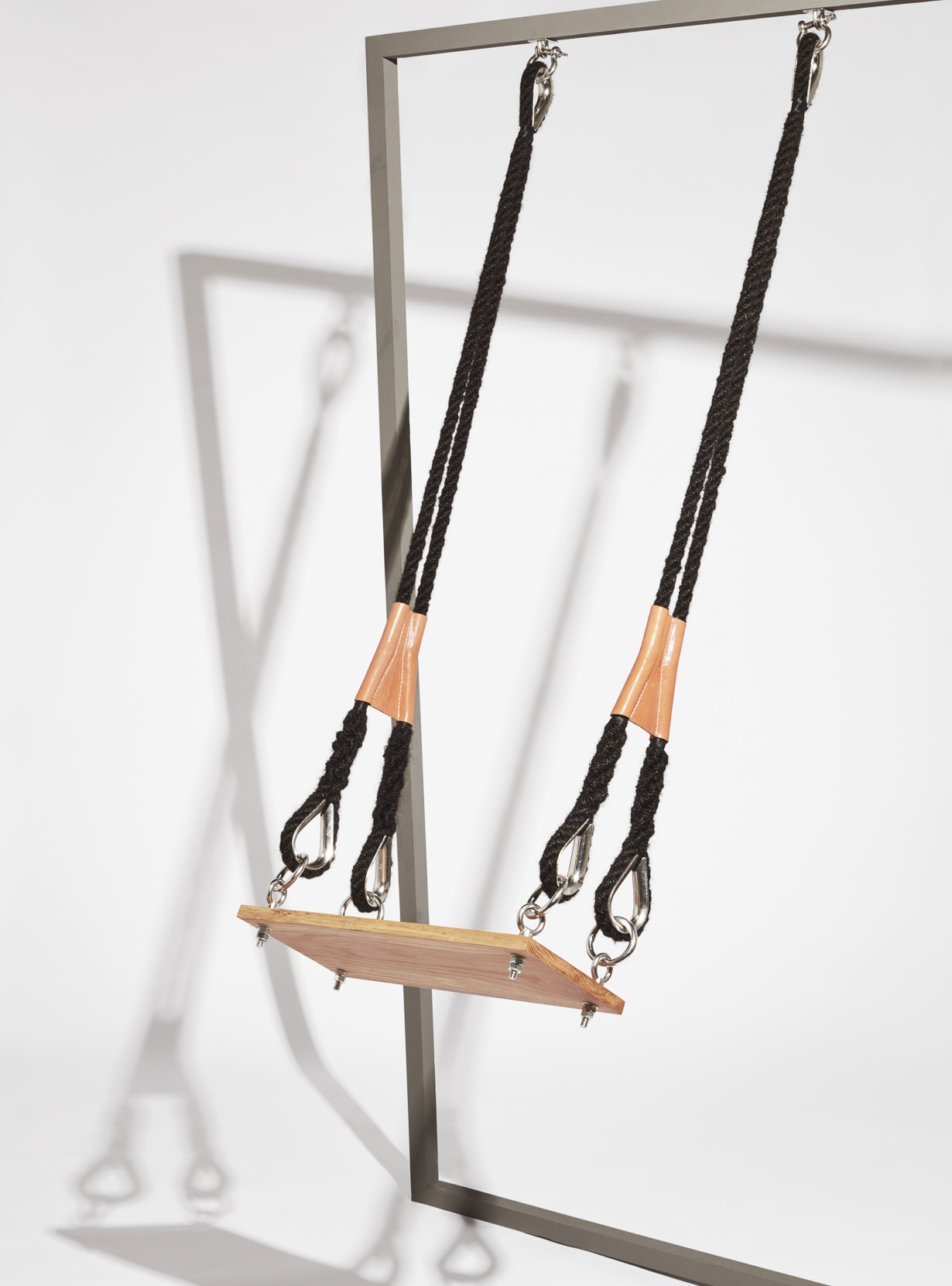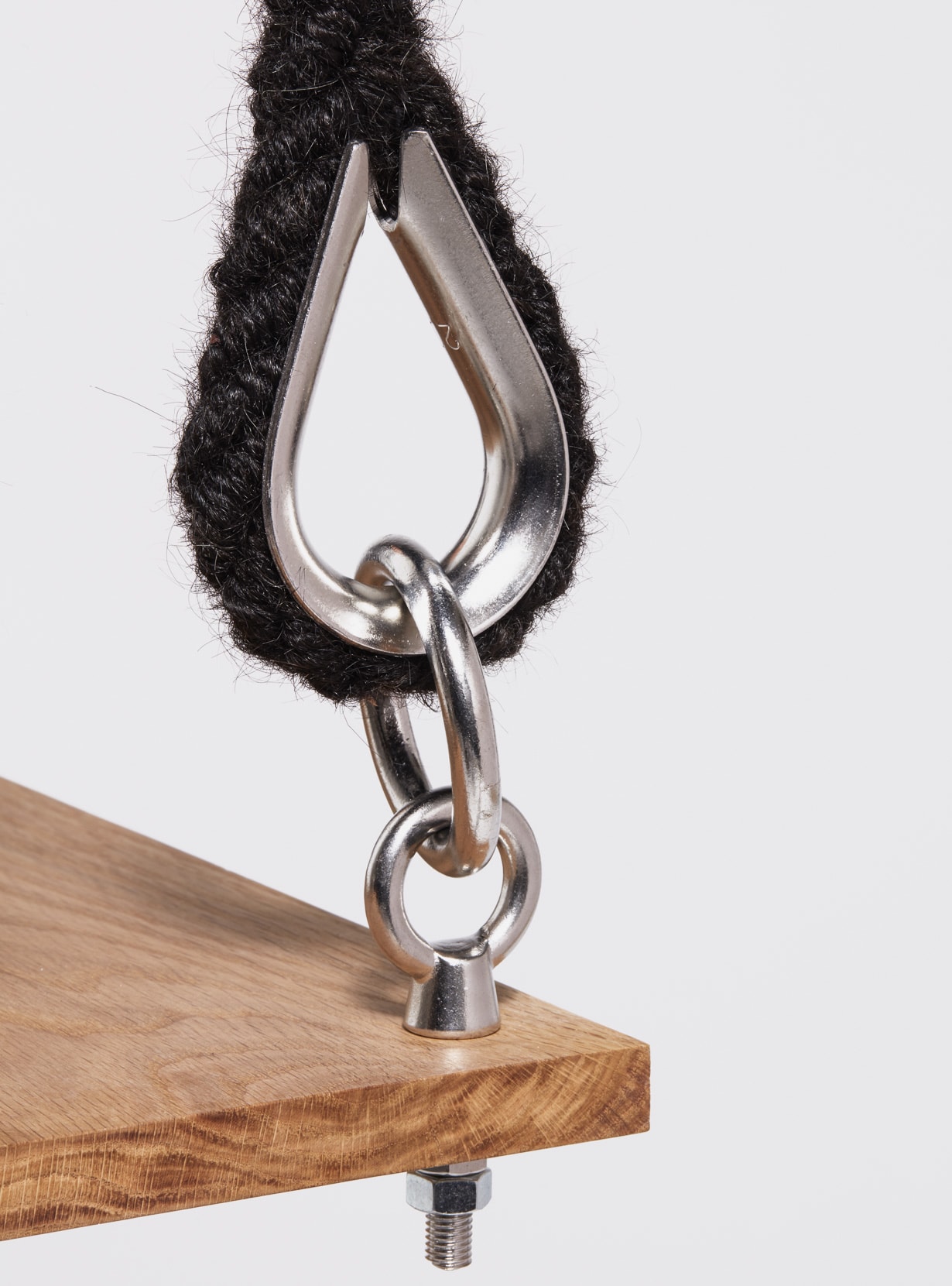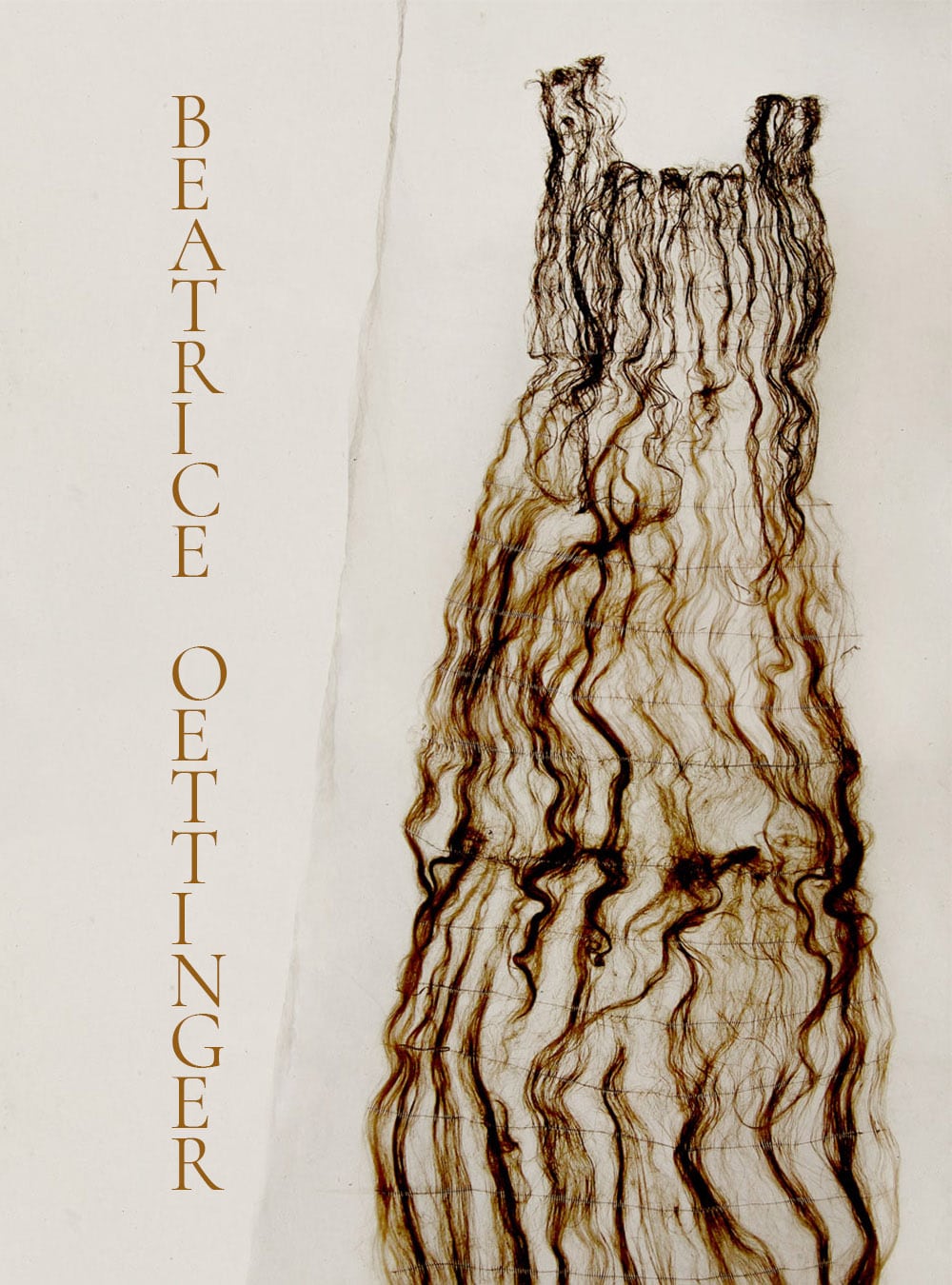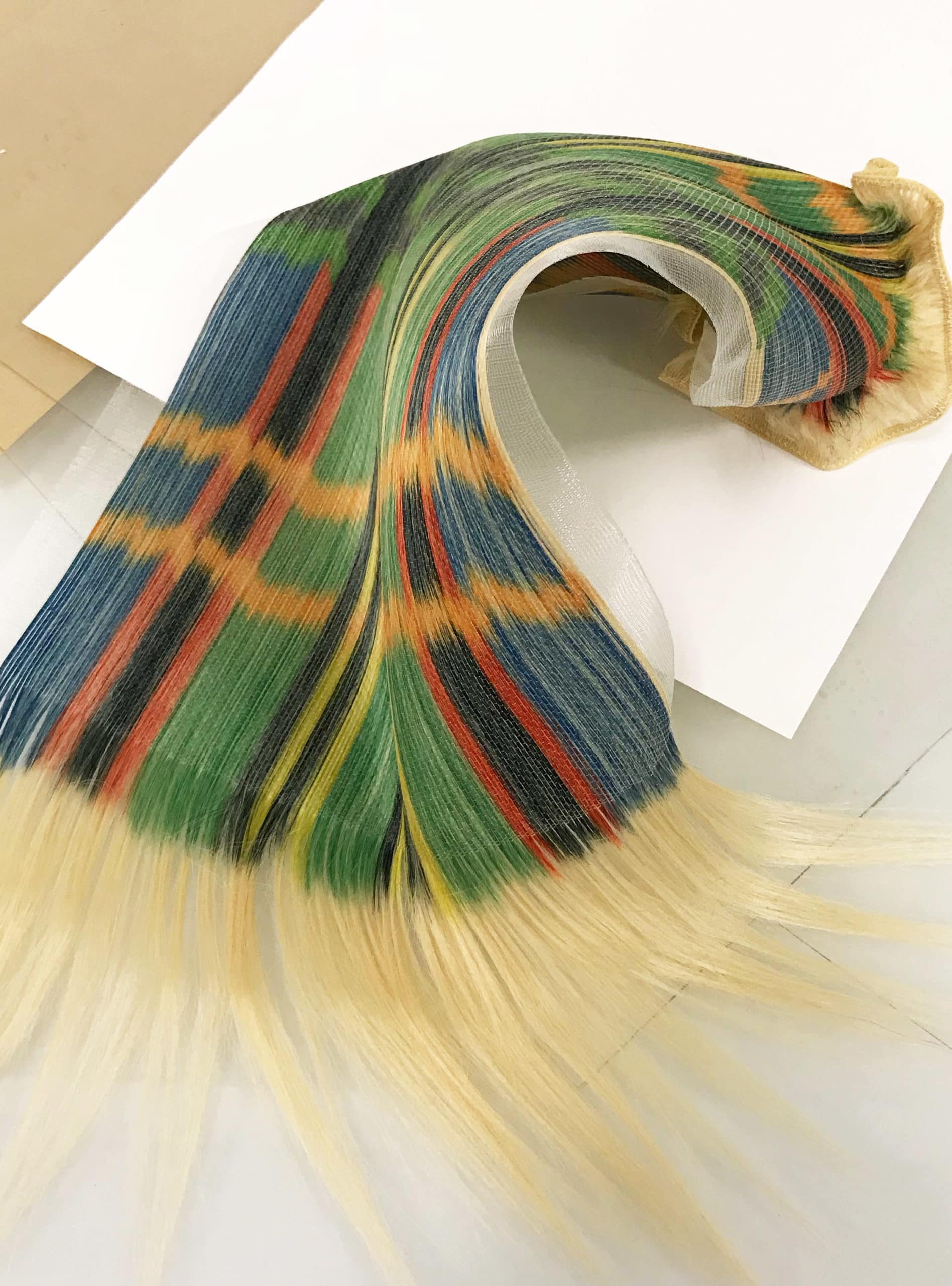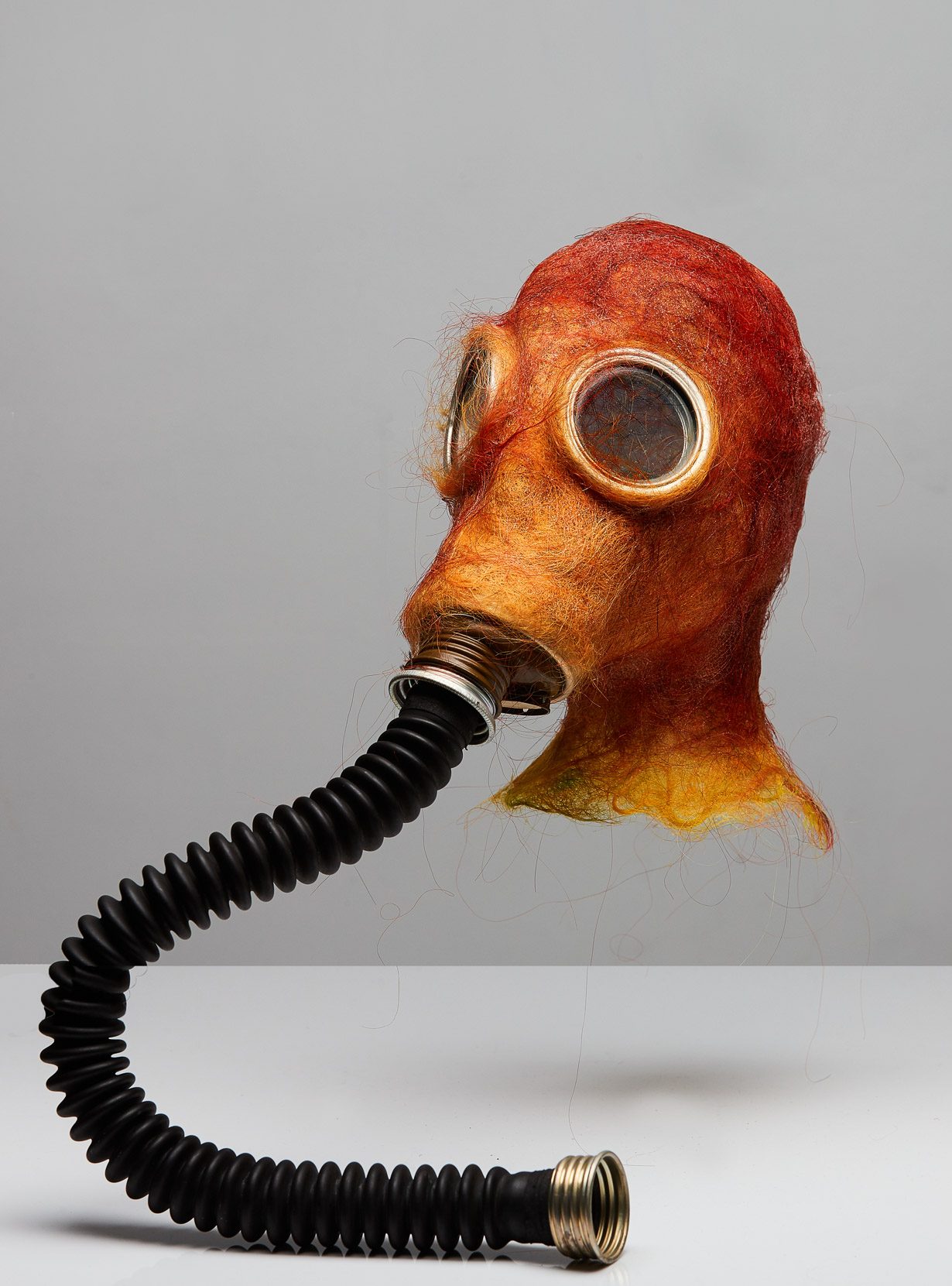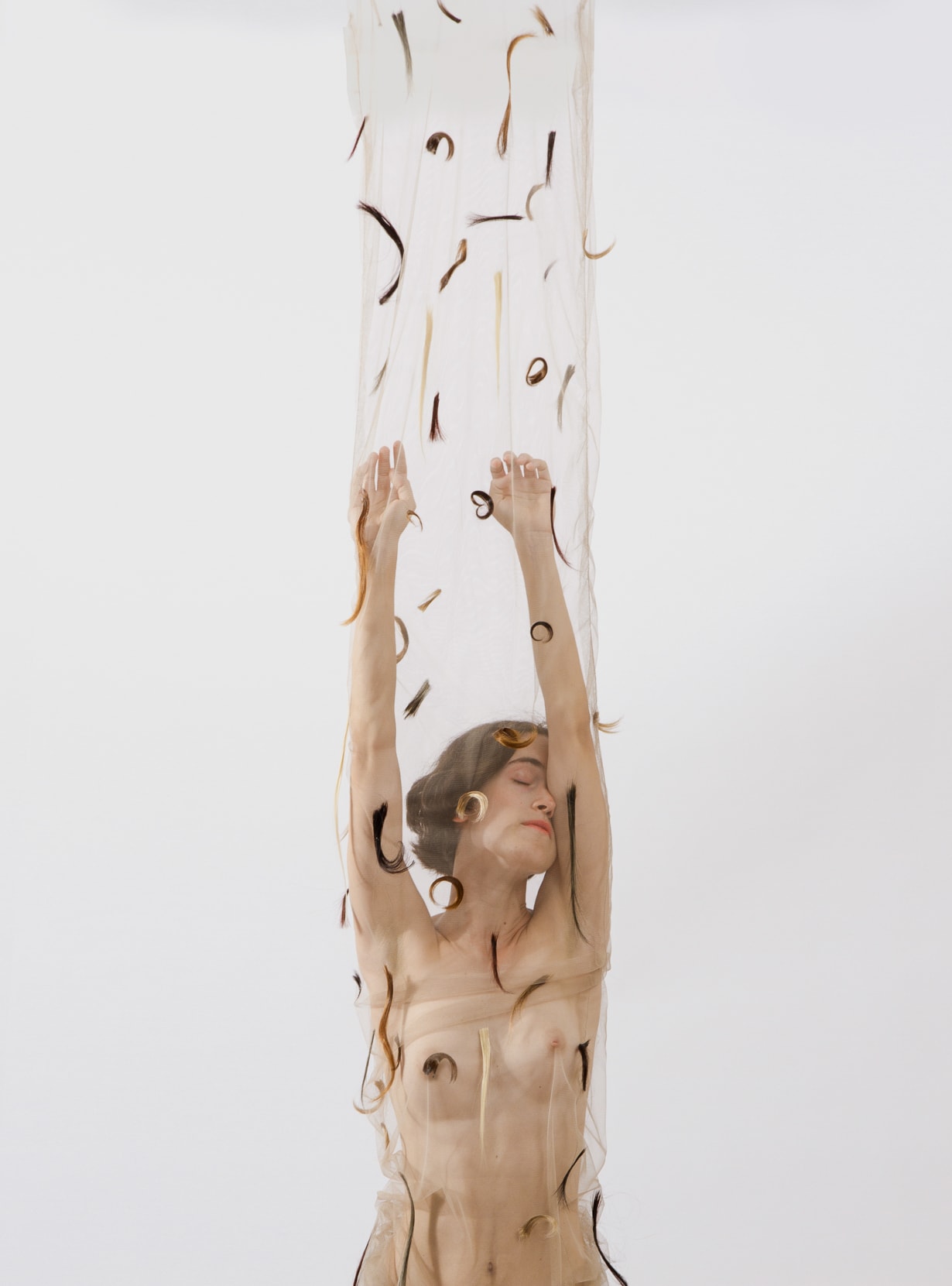- The New Age of Trichology
- The New Age of Trichology
- The New Age of Trichology
ART + CULTURE: Sanne Visser uses ancient techniques to transform discarded hair into a flexible new design material
Images: Sanne Visser
Words: Alex Mascolo
Human hair is a rapidly growing natural resource, with the UK alone amassing approximately 6.5 million kg of human hair waste every year. The current placement of hair in landfills results in the expulsion of toxic gasses into the natural environment. This shocking fact inspired Sanne Visser’s 2016 MA project The New Age of Trichology, which explores how discarded human hair can be repurposed into an abundant new design material.
The London based material researcher and designer started the process by collecting discarded hair from salons across London. Visser collaborated with both a professional spinner and ropemaker/knot specialist, who took the hair through traditional wool making techniques to transform it into a useful and pliable material. “Since I didn’t have any experience in either spinning or ropemaking, I was completely dependent on experts in these ancient crafts,” she explains. “It wasn’t particularly easy to find these craftsman, since there aren’t many people that have the right skills that are open to new materials”.
“Hair is lightweight, flexible, biodegradable, oil absorbent and extremely strong. It is such a ‘normal’ material that you almost forget what it is made of and what strengths it has”
While using hair as a material poses some challenges, “it is a tough fibre to work with as it is very fine, slippery and prickly compared to other natural fibres”, Visser explains that the main obstacle is the stigma that surrounds it. “A lot of people find the material unattractive and gross as soon as it is detached from a person’s head,” she says, “but I do think that we are moving towards an era where people are more accepting of the use of more unusual materials – either natural, synthetically grown or digitally fabricated – particularly when it helps the environment”.
The resulting objects created by Visser, including bags, swing ropes and even bungee cords – are utilitarian rather than decorative, thereby showcasing the incredible resilience and durability of hair as a design material. By giving a new lease of life to ‘dead’ hair, Visser hopes that this project will highlight the possibilities of repurposing a material which is so abundant, with more growing every day on heads all around the world.
- ANTHROPOLOGY OF HAIR
- ANTHROPOLOGY OF HAIR
- ANTHROPOLOGY OF HAIR
- ANTHROPOLOGY OF HAIR
- ANTHROPOLOGY OF HAIR
